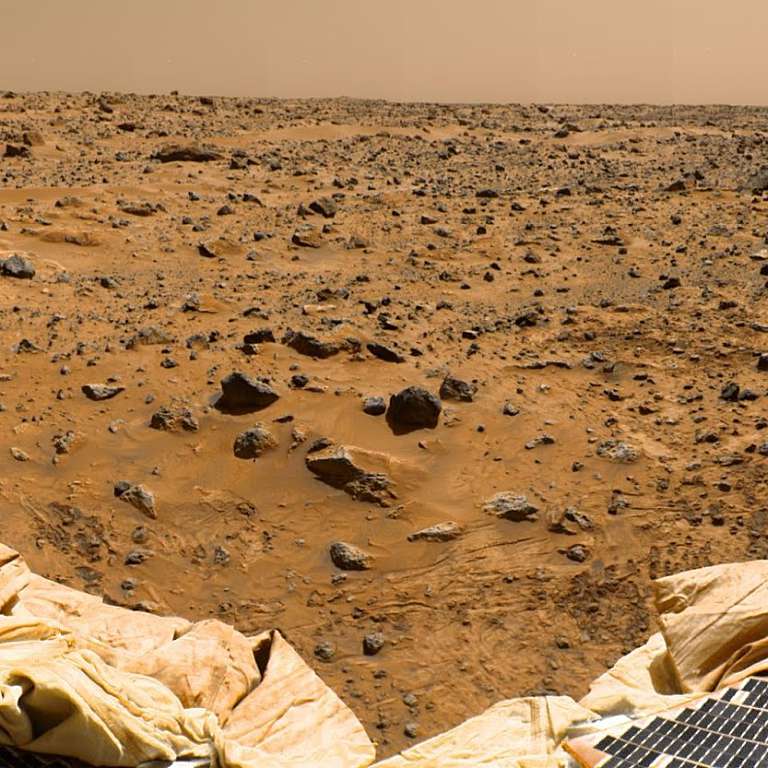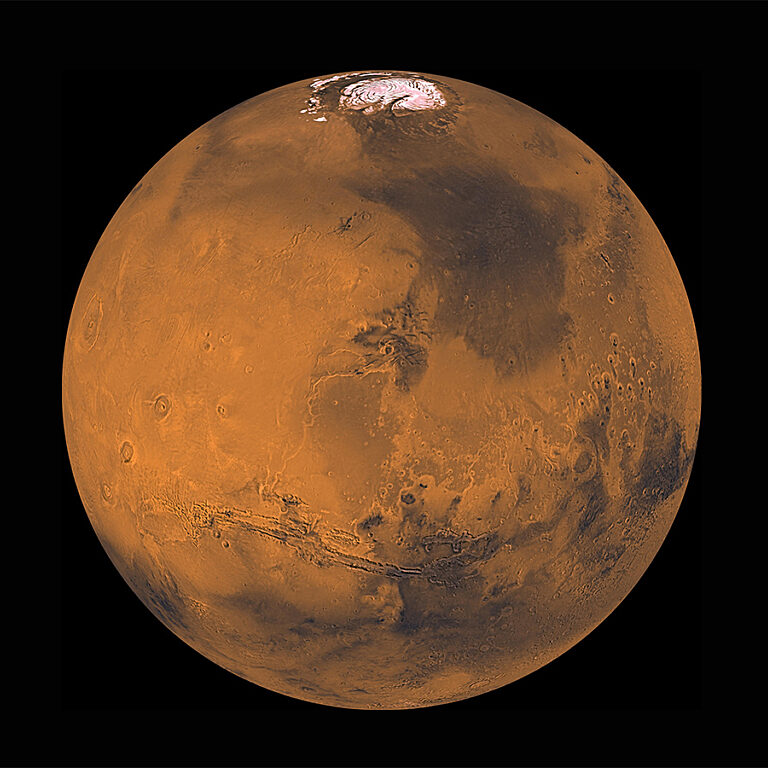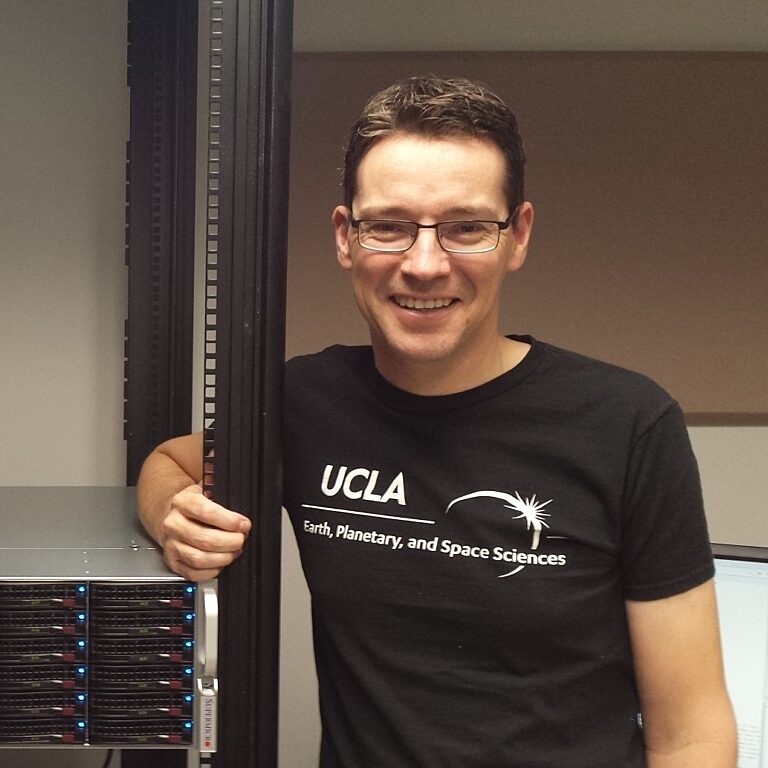
On the Cover: A color-enhanced mosaic of Ares Vallis landing site taken by the Imager for Mars Pathfinder, looking to the southwest toward the Rock Garden, a cluster of large, angular rocks. The Pathfinder rover, Sojourner, is shown snuggled against a rock nicknamed Moe. Image: NASA/JPL
Download PDF
Features
June Solstice 2022
How The Planetary Society got to Mars
The story of how the first-ever names on Mars became those of Planetary Society members.
Renaissance in red
Learn how Pathfinder set the stage for Mars sample return.
Your impact: June Solstice 2022
Meet the first-ever winners of our Science and Technology Empowered by the Public Grant awards!
Your place in space
The path to Mars: Finding our place in the journey of exploration
By Bill Nye, Planetary Society CEO
This year marks the 25th anniversary of NASA’s Pathfinder mission. Many of us were there. I mean, we were here — on Earth — as the lander, barely bigger than a grocery cart, touched down on Mars on July 4, 1997. A few days later, the adorable Sojourner rover, barely bigger than a skateboard, gave us a taste of what it would be like to live among Martian rocks. Nowadays, we expect regular missions to Mars that unveil astonishing vistas of mountains, valleys and plains. But before Pathfinder, it had been 21 years since Viking 1 and 2 sent the first images from the Martian surface in 1976. I was there for those two too. Today, 25 years after Sojourner rolled off the Pathfinder lander on Mars, we’re all here — on Earth.
That 21-year success gap in U.S. Mars exploration is part of the story of The Planetary Society. Our founders, Bruce Murray, Carl Sagan and Lou Friedman, felt that the U.S. government had lost its momentum in planetary exploration, but public support for exploration remained high in the U.S. and around the world. They founded The Planetary Society in 1980 in part to show lawmakers just how much the public values space exploration. The Society has been advocating for missions to Mars and other worlds ever since.
When Pathfinder landed, it initiated a new era of Mars exploration. Since then, there hasn’t been a single year or even month without an active mission at Mars. This sustained exploration of another world is a triumph, not only because the robots themselves have outlived and outperformed their operational life but also because there has been sustained funding. That’s no easy feat! Presidents have come and gone, and congressional seats have been filled by new people, and yet NASA’s Mars Exploration Program has continued to get the support it needs to keep its missions going. Take pride in this because Planetary Society members have helped make this happen. Who knows what we’ll learn about our world by studying other ones.
As you’ll read later in this issue, Planetary Society members have had connections to the Pathfinder mission from the beginning, even before it touched down on Mars. And through the advocacy and crowdfunding work that we’re doing today, you all have a meaningful role in so many other missions that are underway or on the horizon.
Whether you’ve been a charter member since the very beginning or you’re new to the Society, thank you for doing your part. Every mission becomes part of our journey as we find a path to other worlds.
Members on deck
Remembering our journey
We asked The Planetary Society members whose names became the first ever on the surface of Mars to share their memories about the Pathfinder mission and what they're looking forward to in the future of Mars exploration. Here are some of their responses. The full set of replies can be found at planetary.org/pathfinderstories.
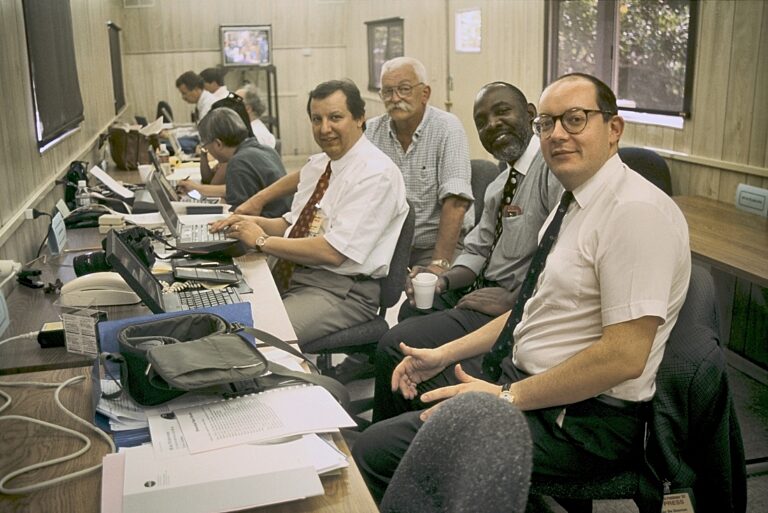
"Back in 1952 as a 12-year-old, I read up on astronomy and articles in Collier’s on space travel by Willy Lay, von Braun and others. I said one day we will travel in space and got 'ya right!' and was laughed at. Now every time we land on Mars, probe an asteroid or find new knowledge, I smile and know I get both pleasure and the last laugh. Learning and expanding your horizons is a real pleasure. Thanks to The Planetary Society, my name has been all over the solar system even if I haven’t, and I am smiling as I travel." — John Dunnewind
"It is nice to be a part of a group that is finding things that I, as a child, was told did not exist or could not be done. I have believed in other planetary systems and visiting other worlds since elementary school. To know that I am a member of a diverse international group of fellow believers makes the long wait that much more exciting. To think that at some time in the near future, human explorers will see my name along with all the others already on the surface of Mars is rather humbling." — John Reynolds
"I am proud my name is on Pathfinder as part of The Planetary Society. Pathfinder is an example of human endeavor at its finest — exploration to benefit us all, science that will benefit us all as humanity and as stewards of our planet of origin." — Alan De Salvio
"When I joined the Society in 1980, I was a young woman with visions for the future of space exploration. Now, I am an elderly woman, knowing that only my name can go to space. I hope to live at least another 10 years, during which time I hope to see a colony on Mars and much more knowledge of all the planets calling Sol home. I wish for Earth to be restored, but I know that our species must move to the stars. I will always continue to watch, listen and imagine what our future holds. We are meant to explore. My heart lies somewhere out there." — Gail Held
"It’s been a fascinating journey watching Pathfinder as it traveled across Mars and all the discoveries it has made. I’m proud of the part The Planetary Society has played and hope that future generations on Mars will see all the people that contributed to their reality." — John Clark
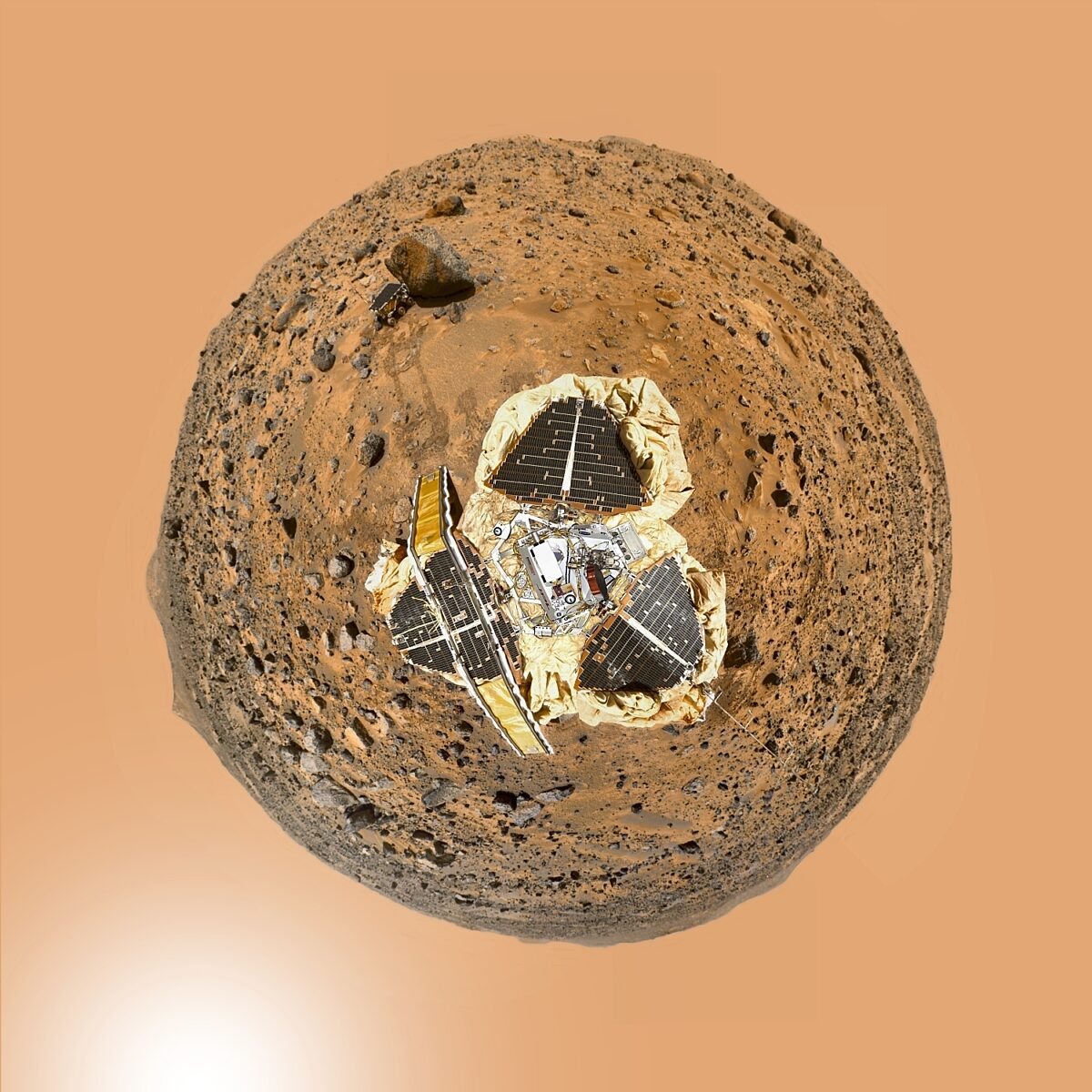
"On July 4, 1997, I, along with my brother and my 4-year-old niece, went to see the Pathfinder’s landing live. I think it was at JPL in Pasadena. We, along with many others, were waiting for a long time, all the while looking at the big screen in front of us. My niece was getting impatient and wanted to go home. But first came the black and white images, and they were great. My niece became interested as I started explaining to her the pictures she was seeing. Then came the color images, and the crowd went wild. We all started to clap and scream from excitement. I have never seen color images of Mars except the ones in the books from the Viking landers. These color images were only 20 minutes old, and that’s why they were special. Even my niece started jumping up and down. It was a great experience for all of us, and I will never forget that day. The Pathfinder was truly a trailblazer, and I hope there is more exploration of Mars that will lead to an international team of astronauts landing there, hopefully in my lifetime. Space exploration not only will help to secure the future for our species but it will help to foster international cooperation and peace here on Earth." — Babak Eskandari
"When I was young, I could only use my imagination or some artist’s imagination to 'see' the other planets of our solar system. Now, Mars is oddly familiar terrain, and the other planets feel closer to home. Our smallness in the cosmos makes the beauty of our home on Earth all the more amazing and all the more fragile. My hope is that the more we understand our place in the universe, the more we’ll care for our home, not to mention feeling a little more humble and appreciative." — Dennis Moritz
"Space science and astronomy are my lifelong passion and hobby. I enjoyed Carl Sagan and jumped at the chance to join The Planetary Society in 1981 and support NASA. In some small way, we — the like-minded — advance this most noble of human endeavors. As far as we know, only humanity can appreciate Mars and the expanse beyond. As far as we know, that ability is the reason for our existence. Perhaps there is more. But if only to stand in awe of and reverence to the infinite beauty of being and to say that we have done so, then that is enough. Pathfinder is that statement." — Harry R. Reinhart
Get involved
Mark your calendar for upcoming space milestones
Mission launches and milestones are always great opportunities to bring people together in celebration of space exploration. Here are two for which to prepare:
BepiColombo, a joint mission of the European Space Agency (ESA) and the Japan Aerospace Exploration Agency (JAXA), will perform a flyby of Mercury on June 23, 2022. This will be its second of six flybys it will perform to pick up enough speed to enter into orbit around Mercury in 2025. When it passes by its eventual destination, it will have a chance to send back photos and other data.
NASA’s Psyche mission is set to launch in August 2022. This mission is heading to a unique, metal-rich asteroid (also named Psyche) that orbits the Sun between Mars and Jupiter. Psyche is thought to be of similar composition to planetary cores, so studying it can teach us about what lies at the center of Earth and other planets. Psyche will reach its destination in 2026.
Keep an eye on The Planetary Society’s social media channels (Facebook, Twitter and Instagram) and our weekly email newsletter, The Downlink, for the latest news and information about these and other missions.
Asteroid Day 2022
The Planetary Society is proud to partner once again with the Asteroid Foundation for Asteroid Day, an internationally recognized celebration of all things asteroid. This year’s virtual and in-person events will highlight and celebrate asteroid research and planetary defense initiatives taking place in laboratories, university departments and space agencies around the world. You can watch the Asteroid Day event for free online on June 30, including special presentations, speeches, video premieres and much more. Learn more at asteroidday.org.
What's up?
Wake up to planets!
By Bruce Betts, Planetary Society Chief Scientist
In the sky
All five planets that can be seen with just your eyes are visible in a line during late June and early July, and all but Mercury continue their visible line dance through September. From east to west, the line includes bright Mercury, super-bright Venus, reddish Mars, very bright Jupiter and yellowish Saturn. The complete line is visible in the pre-dawn east early in this period. Mercury disappears by mid-July, and the others spread out from one another as the weeks pass. By September, Saturn and Jupiter are rising in the east in the early evening, while Venus is very low in the pre-dawn east. The planets appear in a line because they all orbit in approximately the same plane. The Perseid meteor shower peaks August 12/13, with increased activity several days before and after. A full Moon will limit the number visible this year. For more night sky tips, you can always check out planetary.org/night-sky.
Random space fact
As of June 25, 2022 (its three-year launch anniversary), The Planetary Society’s LightSail 2 spacecraft has traveled in Earth orbit more than 7 million kilometers (4 million miles) during approximately 16,000 orbits.
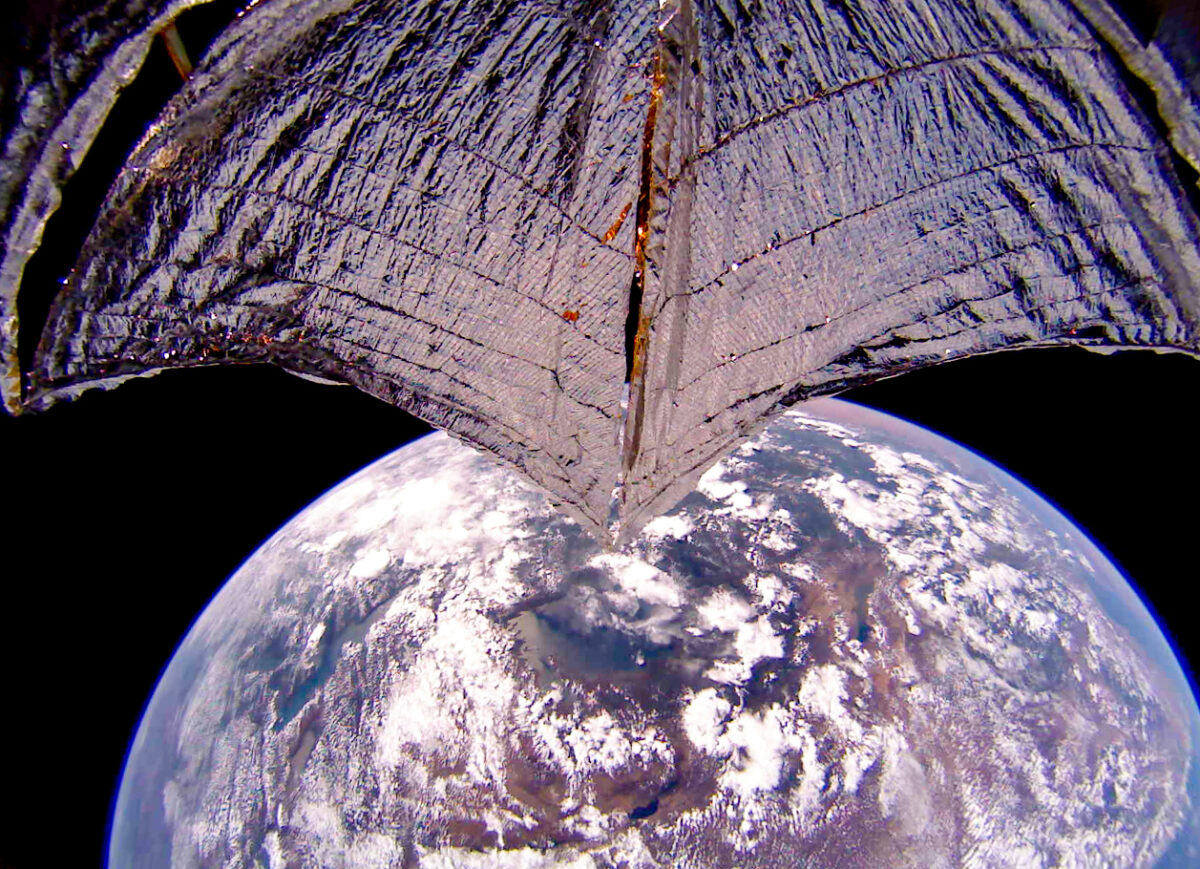
Trivia contest
Our December solstice contest winner is Mickey Fuson of Falls Church, Virginia, USA. Congratulations! The question was: Of the 88 modern constellations agreed upon by the International Astronomical Union (IAU), which is the smallest in area (solid angle subtended)? The answer: Crux, which contains the Southern Cross. Crux is 0.17% of the total sky.
Try to win a copy of “Super Cool Space Facts” by Bruce Betts and a Planetary Radio T-shirt by answering this question: What single space mission returned the highest mass of samples from a body other than Earth?
Email your answer to [email protected] or mail your answer to The Planetary Report, 60 S. Los Robles Ave., Pasadena, CA 91101. Make sure you include the answer and your name, mailing address and email address (if you have one). By entering this contest, you are authorizing The Planetary Report to publish your name and hometown. Submissions must be received by Dec. 1, 2022. One entry per person. The winner will be chosen in a random drawing from among all the correct entries received. For a weekly dose of What’s Up? complete with humor, a weekly trivia contest and a range of significant space and science fiction guests, listen to Planetary Radio at planetary.org/radio.
Astronomical art
Susan Gaby-Trotz, “The South Pole of Mars”
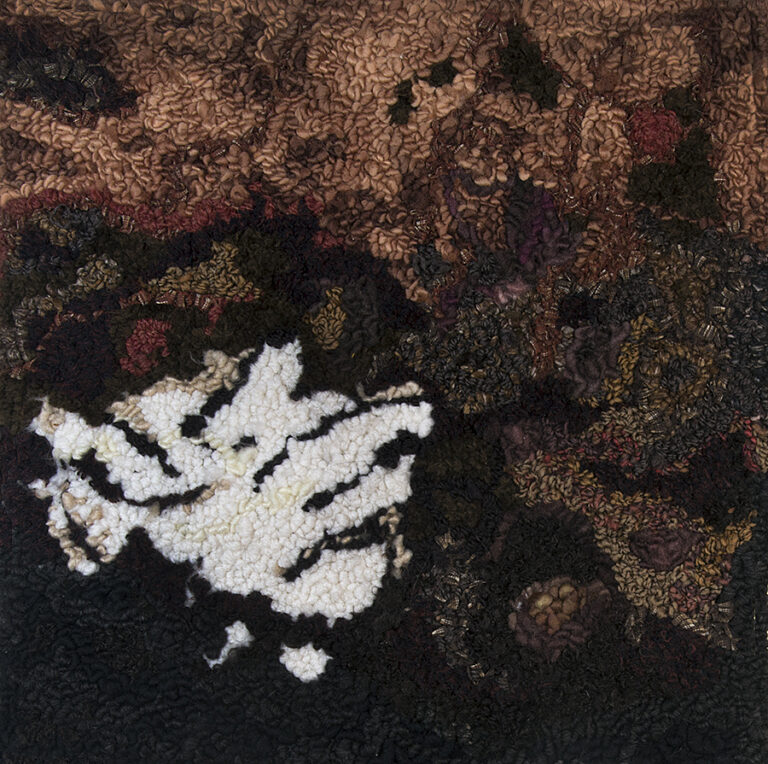
Planetary Society member Susan Gaby-Trotz created this hooked-rug portrait of the Martian south pole using images from the European Space Agency’s Mars Express spacecraft. “The focus of the piece is on the lotuslike frozen water and carbon dioxide with dry river beds blending into the rusty brown Mars crust,” says Gaby-Trotz. This rug is one of eight pieces from her 2017 South Poles project, each based on data from different space probes. “Using the traditional method of hooking rugs with linen burlap backing and a rich variety of wools, yarns and silks, I have blended art and science together with a fresh perspective for each. As a former teacher, I liked to encourage my students to analyze primary resources and to synthesize their understanding in innovative ways. In my own art practice, I try to do the same thing.”
Do you want to see your artwork here? We love to feature our members throughout this magazine. Send your original, space-related artwork to [email protected].
The Planetary Report • June Solstice 2022
Help advance space science and exploration! Become a member of The Planetary Society and you'll receive the full PDF and print versions of The Planetary Report.


 Explore Worlds
Explore Worlds Find Life
Find Life Defend Earth
Defend Earth


